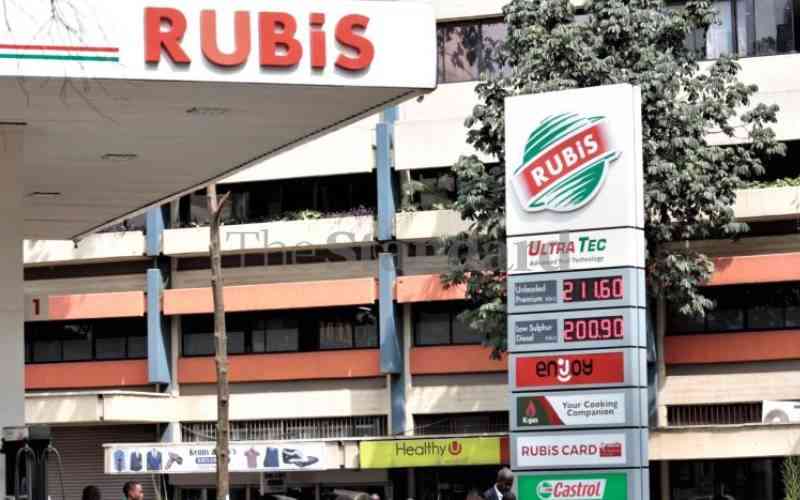By Jackson Kitili
In an effort to raise money from domestic market for budgetary support, strengthen the benchmark bond programme, and provide investment opportunities to the public, the Central Bank of Kenya (CBK), as a fiscal agent of Government, is in the market to raise Sh15 billion through issuance of a 10-year benchmark Treasury bond.
Under the Medium Term Debt Strategy (MTDS) 2010-13, the Government and CBK are not only concerned about raising money for budgetary support, but are also committed to building a leading debt market in Africa, and the rest of the emerging markets.
This is to create a stable, deep and liquid debt markets to facilitate economic development. As provided for in the MTDS, CBK will continue to issue Treasury bonds of two, five, 10, 15 and 20-year benchmark maturities.
Benchmark bonds are securities or debt instruments mainly issued for market development. They are characterised by high credit quality, least default risk, are highly liquid and reasonably large in volume.
As a result, these bonds are actively traded in the secondary market, have stable prices/yields and are therefore most reliable for pricing other debt securities or financial facilities.
As a result, benchmark issues form the basis for deriving benchmark yield curve. Most of them are issued mainly for secondary market development besides being used for Government borrowing.
When the market is characterised by many small bonds held by a few investors, some for speculative purposes, such securities become illiquid and therefore less attractive.
This in turn impacts negatively on performance of not only future Government bond offers in the primary market, but also inhibits potential corporate debt issuers from raising long term capital from the debt market.
Economic development
Lack of long-term (development) finance means less long-term investment and hence adverse impact on economic development.
It is important to observe that since commencement of benchmark bonds reopening in April last year, and subsequent issuance of more long-term large volume papers of up to 25 years, the market has witnessed high turnover at the Nairobi Stock Exchange fixed income securities counter. This is because, with adoption of these tenors in September 2007 and full implementation via benchmark bonds reopening last year, the market witnessed reduced bond fragmentation, implying few but large sized bonds held by many investors, ready to trade. This increased supply in individual benchmark bonds, has in turn led to the current vibrancy in trading at the secondary market at the Nairobi Stock Exchange.
As a result, there is a well-established yield curve which has been used by a number of firms to price their debt instruments in raising long term capital. These include Housing Finance, KenGen, Safaricom, CFC Stanbic and Athi River Mining.
Yield curve
It is in the realisation of these benefits that CBK is offering 10-year Benchmark Treasury Bond for October 2010. This paper is subject to reopening in order to increase the volume so that it can be traded and held widely to form a reliable pricing point on the yield curve. A bond with 9.5 years to maturity, which is the closest to 10-year is currently trading in the seven per cent to 7.5 per cent range at the Nairobi Stock Exchange. It will therefore be much easier for both institutional and retail investors to price this paper.It is also important to note that this offer follows a well-structured issuance programme that alternates short and long term bonds in order to capture all investors considering their time preference.
The last 10-year bond (FXD1/2010/10) issued in April had a market-determined coupon rate of 8.79 per cent and average yield of 8.633 per cent. With 9.51 years to maturity, the bond is trading at 7.106 per cent at the secondary market.
The new 10-year bond on offer for October 2010 will therefore enhance liquidity and ensure stability and robust trading.
CBK will continue reopening more benchmark bonds and re-issue new ones where the upper limit per tenor is exhausted or where the time remaining falls outside the maturity period.
In addition, the Bank will continue to explore use of other strategies such as switches and conversions in future to achieve a robust and deep bond market in the region.
—The writer is the Monetary Operations and Debt Management Director at Central Bank of Kenya
 The Standard Group Plc is a multi-media organization with investments in media
platforms spanning newspaper print operations, television, radio broadcasting,
digital and online services. The Standard Group is recognized as a leading
multi-media house in Kenya with a key influence in matters of national and
international interest.
The Standard Group Plc is a multi-media organization with investments in media
platforms spanning newspaper print operations, television, radio broadcasting,
digital and online services. The Standard Group is recognized as a leading
multi-media house in Kenya with a key influence in matters of national and
international interest.
 The Standard Group Plc is a multi-media organization with investments in media
platforms spanning newspaper print operations, television, radio broadcasting,
digital and online services. The Standard Group is recognized as a leading
multi-media house in Kenya with a key influence in matters of national and
international interest.
The Standard Group Plc is a multi-media organization with investments in media
platforms spanning newspaper print operations, television, radio broadcasting,
digital and online services. The Standard Group is recognized as a leading
multi-media house in Kenya with a key influence in matters of national and
international interest.









